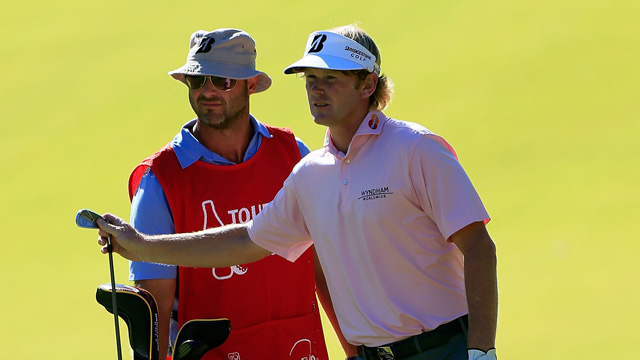NEWS
A Lesson Learned: Dealing with nerves

The Fed Ex Cup's completion at East Lake this year definitely had the feel of a "Super Bowl". This week's lesson learned was evident in the final round and was easy to see; Nerves and controlling them. I agree with what was stated during the telecast of the final round "this is golfs version of the lottery". With the opportunity to win almost 12 million dollars the entire front page of the leader board spent a good part Sunday making golf look more like what we experience in a round. Hitting the ball into the water on a par 3, missing 70% of the fairways, hitting the ball into the bleachers and having to make 20 foot putts for par. So how did Brandt pull it all back together and win almost 12 million dollars.
Brandt was able to get back on track by sticking to his routine and continuing to grind. The routine is an area of golf that is sometimes over looked, but it plays a huge role in one's ability to play their best. The routine varies from person to person, but should not vary from shot to shot. The best golfers in the world have a pre shot routine for hitting shots and another pre shot routine for putting. When you are watching the telecast of a tournament and you notice a player back off of their shot it is because something was amiss. The player will then go through their entire pre shot routine again. It is amazing to me that the majority (probably over 90%) of amateurs do not have a pre shot routine. What is even more alarming though is that when you are standing over a shot or a putt and something feels a little off you will just "deal with it" and hit the shot anyhow.
A pre shot routine is used to both mentally and physically set up you up to perform at your best. The majority of routines for a normal shot will take a minute or two and for a putt usually two to three minutes. Often for putting a routine will start when it is not your turn to putt and of course culminate with you hitting the putt. So then what goes into the routine?
1. Club selection and shot shape
2. Point of aim
3. Gripping the club
4. Visualizing the successful shot and controlling your breathing
5. Taking your stance
6. The waggle
7. The trigger
Step 4 for the amateur golfer is usually replaced with "do not hit it……" and this negative thought almost ensures that you will hit it there. Step 7 is a point that is often over looked, but is crucial to starting the swing. In every sport that is not reactionary the athlete has to come up with something that actually starts the action. A forward press is a common "trigger". In Sunday's telecast they showed Brandt's trigger. His right thumb comes off of the club and then when he puts the thumb back onto the club he digs the nail into the grip and then away the club goes. The entire routine is repeated time after time. I have been fortunate to be around many golfers that have success and I always like to find out what put them over the hump and into the winners circle. They always come back to how nervous they were and how they relied on their routine to carry them through the round. So next time you go to the range or practice putting green set aside some time and develop a routine that gets you mentally and physically ready for success.
Blake Cathey is a PGA Certified Instructor and the Director of Instruction at The Members Club at WildeWood and Woodcreek. Blake is only one of a handful of professionals to ever reach certification in all six areas of the PGA. Blake's students are a vast cross section of professional golfers, professional athletes, politicians, CEO's, ranked amateurs and beginners. Blake can be reached at (803) 931-2576 or by email bcathey@wildewoodwoodcreek.com.
